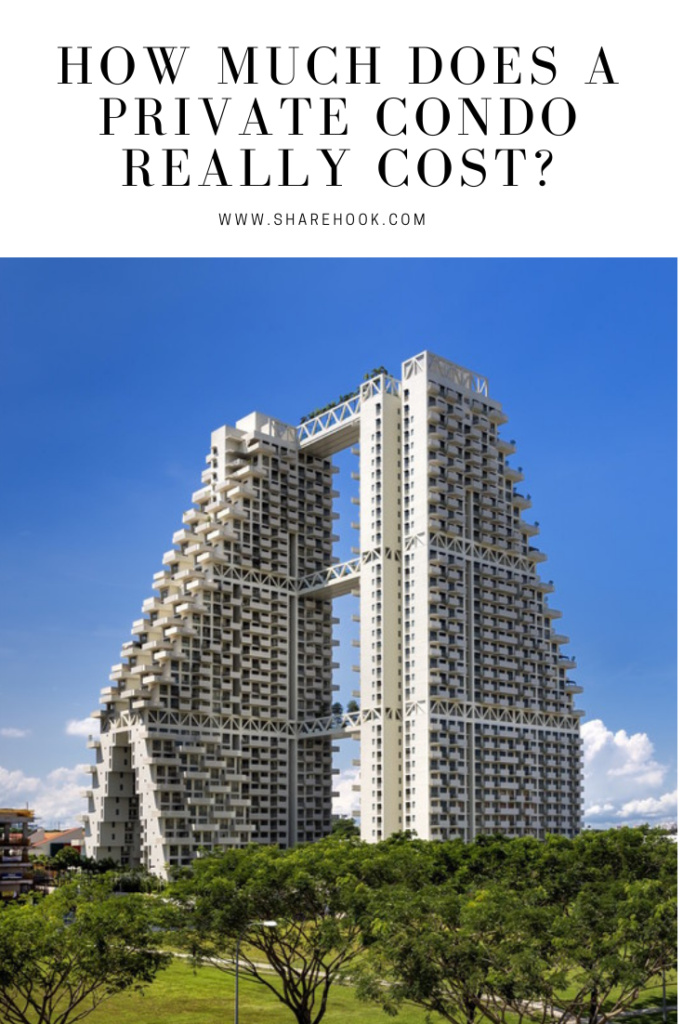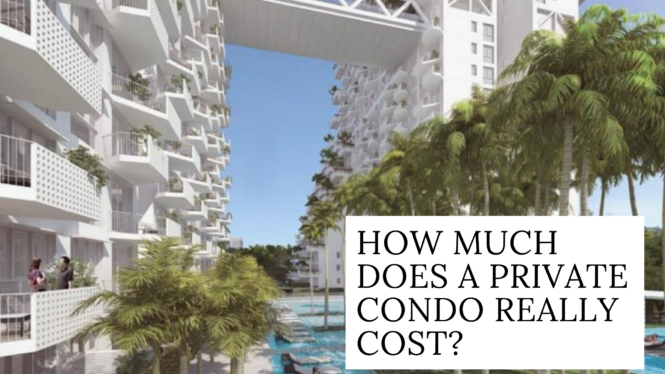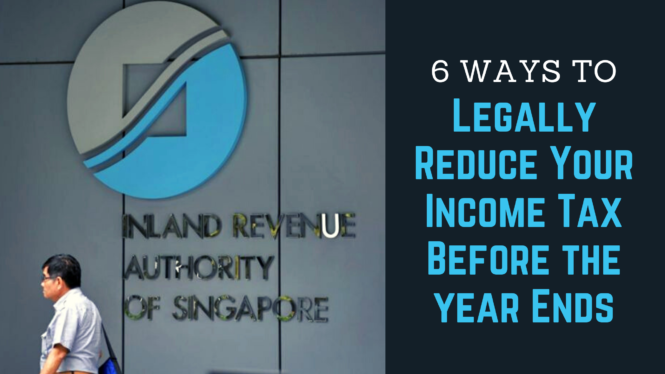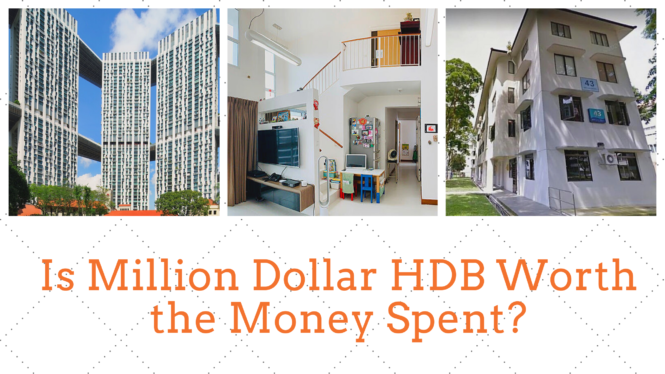Condominium (Condos) are probably many Singaporeans’ ultimate housing goals given its premium facilities and exclusivity. Whenever we hear someone have brought a condo, the word “million bucks” and “rich” would probably flash across our mind.
However, behind all the glam and glitter, there are many additional costs to pay for as compared to staying in HDBs, and are usually only known to people who actually owns one.
For those who are looking to upgrade from HDB, or looking to buy a condo directly, you do not want to miss this article as we explore the many potential spendings you could potentially incur by staying in a condo.
Initial Purchase
- Option Fee
Option fee is a payment that entitles you to an Option to Purchase (OTP) for the unit you booked. It is only payable via cash. It is in the range of 5% to 10% of the purchase price of the unit, though many pay the minimum of 5%.
This fee is not refundable if you back-out of the purchase after signing the Sales and Purchase Agreement (S&P). However, if you back-out before, or not sign the S&P within 8 weeks, you will have to forfeit 25% of the option fee.
Damage = 5% of the purchase price
- Sales and Purchase Agreement (S&P)
You will receive the sales and purchase agreement from the developer within 14 days from the day you made payment for the OTP. From the day you sign this agreement, you have 3 weeks to exercise the S&P.
You will then be granted 8 weeks from the date of OTP to make a further payment of 15%, rounding the total payment you have made to 20%. This payment can be made via CPF OA (ordinary account).
Damage = 15% * purchase price
- Legal Fees
A lawyer is required to complete all the paperwork that includes, conveyancing and the registration of land titles and deeds, and granting of bank mortgage loan (if any). The average rates is between $2300 to $3000 and you can get a recommendation by the bank you are taking a loan from.
Damage = $2300 – $3000
- Buyer Stamp Duties
Stamp duty is a lump sum tax that you need to pay to the IRAS whenever you purchase or sell a property. This needs to be paid within 14 days upon exercise of the S&P. It is calculated based on the value of the property and the percentage is as follows:
| Calculation of Stamp Duty | |
| First $180,000 | 1% |
| Second $180,000 | 2% |
| Thereafter | 3% |
While the buyer stamp duties can be paid via CPF, you would need to pay them in cash first to the lawyer. Thereafter, the lawyer will apply to CPF Board to release your CPF money before reimbursing you back.
Hence, damage = (n * 3%) – $5400, where n = the purchase value
- Additional Buyer Stamp Duties (ABSD)
If this is not your first property in your name, you would need to fork out ABSD. This is a cooling measure introduced to slow down the housing prices from skyrocketing and creating a housing bubble. The rates are as follows:
Do note that this is on top of the stamp duties you are paying above and needs to be paid within 14 days of date of exercise of S&P as well. It is important to consider this in your finance calculations as it will definitely eat into a large chunk of your savings.
damage = % of the property price based on above rates
- Valuation Report
You will need a valuation report done by a third party to determine the fair value of your condo. This is usually arranged between your bank and the valuer and the report will be sent to your lawyer. It usually costs $200 before GST, and may be absorbed by the bank giving the loan as package. Otherwise, it can be paid via CPF or cash.
Hence, damage = $214
- Survey Fees
The survey fee is payable based on the type of unit, and is to offset costs of engaging professional surveyors. This is paid to the lawyer via CPF or cash, on top of the legal fees. The price ranges between $250 to $450 and will be stated in your agreement.
Hence, damage = $250 – $450
- Monthly Maintenance Fees
6 months of monthly maintenance fees need to be paid in advance to the developer. The amount paid depends on how much shares your unit is worth. An average maintenance fee of a 3 roomer comes up to $300 to $400 per month depending on the amount of facilities and the number of units in the development. This can only be paid via cash.
Hence, damage = ($300 to $400) * 6
During the Wait
Unless you are cash/CPF rich and do not need to take a mortgage loan, chances are, you will need to start paying the monthly instalments of the loan while waiting for your development to be constructed.
There are 2 types of payment scheme – progressive payment and deferred payment scheme.
Progressive Payment Scheme
| Progressive Payment (Standard Payment) | |
| Stage | Payment under a standard payment scheme ( % of purchase price ) |
| Upon the grant of Option to Purchase | 5% – 10% (booking fee) |
| Upon signing of the Sale & Purchase Agreement or within 8 weeks from the Option date | 20% less booking fee |
| Completion of foundation work | 10% |
| Completion of reinforced concrete framework of unit | 10% |
| Completion of partition walls of unit | 5% |
| Completion of roofing/ceiling of unit | 5% |
| Completion of door sub-frames/ door frames, window frames, electrical wiring, internal plastering and plumbing of unit | 5% |
| Completion of car park, roads and drains serving the housing project | 5% |
| Issue of Temporary Occupation Permit | 25% |
| On Completion Date | 2% |
| Issue of Certificate of Statutory Completion | 8% |
| Expiry of the defects liability period | 5% |
Deferred Payment Scheme
This scheme allows purchasers to defer the due date for the progress payments under the standard payment scheme to a later date.
| Deferred Payment Scheme | |
| Stage | Payment under a standard payment scheme ( % of purchase price ) |
| Upon the grant of Option to Purchase | 5% – 10% (booking fee) |
| Upon signing of the Sale & Purchase Agreement or within 8 weeks from the Option date | 20% less booking fee |
| Notice of Vacant Possession | 65% |
| On Completion Date | 15% |
- Fire Insurance – Mortgagees Interest Insurance
While this is optional, most banks ties this up with your mortgage loan. This covers the exterior of the unit, such as the structure and the beams. This is actually used to indemnify the bank such that in a event that your house caught fire, and affects your ability to make payment to the mortgage loan, they can claim from the insurance company.
Do note that you are still require to continue to make your monthly payment. However, you are making the repayment to the insurance company rather than the bank.
Fret not, most condo developments actually have a Management Committee of Strata Title Plan (MCST) that have similar coverage as this mortgagees interest insurance. Hence, if a fire really breaks out, you can claim from this.
- Fire Insurance – Home Content Insurance
This covers both the renovations and content of your home when your house caught fire. Renovations include fixtures such as the shelves and the marble tiles that you have specially imported from Italy. While home contents refers to furniture such as the 8k mattress or the 3k TV that you got at a great discount.
Most homeowners are recommended to get it, especially when people are spending more and more on home renovations.
- Mortgage Insurance
This is optional and you will need to approach a private insurance company to get a quotation.
Lump Sum Payment
In 2018, the Loan-to-Value (LTV) ratio for first housing loan was adjusted to 75%. This means that you can only borrow up to 75% of the purchase price of the condo, depending on your current debts and age.
This means that there is a minimum 5% gap between the initial payment you have made and the loan you are getting. You would need to top up the difference in the form of a lump sum payment either via cash or CPF.
Damage = 5% of purchase price
Monthly Instalments
While you can loan a maximum of 75% of the purchase price, the amount you can borrow hinge heavily not only on your age, but also on your earning power.
Total debt servicing ratio (TDSR) for private properties are capped at 60% of your income, and is less strict as compared to mortgage servicing ratio (MSR) (similar meaning, but only for use for HDB / ECs). This means that a maximum of 60% of your salary can be used to repay debts.
Sample Calculation
In this sample, we are looking at a 3-roomer OCR condo with a price tag of $1million.
We can assume the following:
- Singaporean couple first property purchase
- Combined income is $10,000
- Bank loan is taken at 3.5% per annum for the maximum tenure of 30 years. (This is the standard interest rate used to calculated based on MAS policy.)
Calculations as follows:
Option Fee = $50,000 (cash)
Sales and Purchase Agreement (S&P) = $150,000 (CPF / cash)
Legal Fees = $3000 (CPF / cash)
Buyer Stamp Duty = $24,600 (CPF / cash)
ABSD = –
Valuation Report = $214 (CPF / cash)
Survey Fees = $300 (CPF / cash)
Monthly Maintenance Fee = $1800 (cash)
Lump Sum Payment = $50,000 (CPF / cash)
Mortgage Insurance = optional (cash)
Fire Insurance = optional (cash)
| Total Initial Payment = | $279,914 |
| Loan Amount = | $750,000 (maximum amount) |
| Monthly Mortgage* = | $3368 |
* excludes monthly bills such as utility bills, S&CC, property taxes etc.
How much does a Condo really cost?
On a 30 years instalment, you are looking to pay:
$279,914 + $1,212,480 (total instalment paid) = $1,492,394 (for 30 years instalments)
Wow! Even though your purchase price of the condo may cost $1 million, the actual costs you are paying might be up to 50% higher than what you sign up for, mainly due to the interest on the loan you took.
If you are committed to one, do always make sure that you do not over leverage on your finances and plan ahead for rainy period.
Debating between an EC or a condo, do check out our guide on how much does a Executive Condo (EC) really cost?.
Last Updated: 02 Mar 2019






